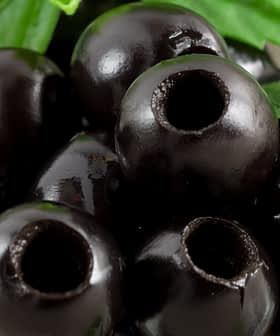Olive Oil Promotion Program Gains Support from Stakeholders
The olive oil research and promotion program proposed by the NAOOA to the USDA is gaining support from importers, farmers, and stakeholders, aiming to raise awareness about the health benefits and culinary uses of extra virgin olive oil. Despite the growing consumption of olive oil in the U.S., there is a need for collaboration to increase awareness and consumption, with the proposed program seen as a way to achieve this by educating consumers about the different grades and types of olive oil available.
The olive oil research and promotion program proposed to the United States Department of Agriculture by the North American Olive Oil Association (NAOOA) is receiving growing support from importers, farmers and other stakeholders.
The proposed industry-funded olive oil promotion cooperative aims to raise awareness about extra virgin olive oil’s health benefits and culinary uses.
Diet is one of the most powerful and modifiable factors influencing chronic disease in the U.S. Yet, extra virgin olive oil, one of the healthiest fats, remains underused in many American kitchens.
“Growing olive oil culture in the U.S. is not just important, it represents a major shared opportunity for importers, domestic and international producers, retailers, distributors, chefs, dietitians, doctors and ultimately the wider public,” said Giovanni Quaratesi, head of global corporate affairs at Certified Origins, the second-largest importer of olive oil in the U.S.
“Despite the absence of a coordinated promotional effort, and with limited but growing domestic production, the U.S. has become one of the largest olive oil markets outside of producing countries,” he added. “Yet olive oil remains underused and often misunderstood in everyday cooking.”
International Olive Council (IOC) figures reveal a dramatic surge in U.S. olive oil consumption, from 88,000 tons in the 1990/91 crop year to a projected 398,000 tons in 2024/25. This substantial increase places the United States among the world’s leading olive oil consumers.
Still, per capita annual consumption in the U.S. slightly exceeds one liter, compared to eight liters in Italy and 11 in Spain.
See Also:U.S. Sees Significant Growth in Organic Olive Oil SalesAccording to market experts, the industry needs to collaborate to increase United States olive oil consumption, and the NAOOA program is increasingly seen as a vehicle to achieve this.
“I work with California producers, some international ones as well as importers and distributors. And I’m seeing the enthusiasm growing [for the NAOOA proposal],” Roberta Klugman, consultant at Klugman and Associates, told Olive Oil Times.
“When it was first launched, a few years ago, people were skeptical,” she added. “I was skeptical. Shortly after learning more about the program, what it could do, we have seen a consensus among producers, importers, distributors and retailers.”
Joseph Profaci, the NAOOA’s executive director, said that the consensus among importers is “almost unanimous” and that U.S.-based producers have strong support.
The proposed program faces significant challenges in helping olive oil take root among U.S. physicians, lawmakers and households.
“One of the ongoing challenges is shifting the perception of the olive oil category from a specialty or occasional-use product to an everyday kitchen essential,” Quaratesi explained. “A lot of progress has been made, yet only less than half of U.S. citizens use olive or extra virgin olive oil.”
According to Samantha Dorsey, the president of California-based McEvoy Ranch, there is still much work to do to inform Americans about olive oil’s health benefits and culinary uses.
“A research and promotion order would allow the olive oil industry to pool its resources to raise awareness about olive oil’s health benefits, incredible taste attributes and underlying sustainability story,” she said.
Dorsey added that while a unified message is a clear benefit for the industry, the larger win could be for public health, should Americans begin using more olive oil regularly.
“Just imagine how much chronic inflammation we could help alleviate by having just a little more olive oil flowing at the dinner table,” she said.
To boost awareness, farmers and producers told Olive Oil Times that helping U.S. consumers distinguish between olive oil grades and types should be a priority.
“Olive oil is tricky to buy for many reasons,” Dorsey said. “It is perishable, yet somewhat shelf-stable. It is hard to distinguish between grades and types of olive oil. It is usually impossible to taste it before you buy it.”
“All of these attributes lead to consumer confusion, so any guidance that the industry can offer – through a research and promotion order, for example — will benefit our consumers, too,” she added.
Although public interest in olive oil has grown, driven mainly by its recognized health properties, culinary applications and quality levels remain unclear to much of the U.S. population.
“At times, packaging, social media strategies, and marketing investments carry more weight than the product itself, making it difficult for solid quality offerings to stand out and gain traction without a substantial budget and communication team behind them,” Quaratesi said.
“A related challenge is category segmentation,” he added. “The differences between extra virgin olive oil and olive oil — in terms of production methods, flavor profiles, quality standards and price — are not always clearly communicated on the shelf.”
Quaratesi suggested that building trust and long-term growth in the category could depend on clearly communicating these distinctions.
“In the U.S. market, non-extra-virgin olive oil typically consists of a blend of refined olive oil and a small percentage of extra virgin olive oil,” Quaratesi said.
“This format offers an accessible entry point to the olive oil category for those exploring alternatives to seed oils or other cooking fats, often at a lower price than extra virgin olive oil,” he added.
Quaratesi believes there is room for non-virgin and extra virgin olive oil in the marketplace as long as consumers understand the differences in quality and health benefits.
“Proper shelf segmentation and positioning can help prevent confusion and guide busy shoppers toward the product that best suits their needs,” Quaratesi added.
Producers at Olivaia’s OLA in central California highlighted the vital role of consumer education, primarily through tastings and events.
“One of the comments we have received repeatedly is ‘this does not taste like olive oil,’” co-owner Giulio Zavolta said. “While we take a lot of pleasure in explaining why our award-winning extra virgin olive oil is indeed what olive oil should taste like, the comment is also indicative of the work we as an industry need to do to raise the level of understanding of what a true extra virgin olive oil is.”
“We need to make sure consumers make the connection between taste and health attributes,” he added.
Rachelle Bross, co-owner of Olivaia’s OLA, reflected on the national impact if olive oil became a true staple of the American diet.
“Diet is one of the most powerful and modifiable factors influencing chronic disease in the U.S.,” she said. “Yet, extra virgin olive oil, one of the healthiest fats, remains underused in many American kitchens.”
“Replacing less healthy fats with olive oil is a simple, delicious way to boost overall health,” Bross added.
However, Quaratesi noted a significant gap between the strong interest in healthy eating and the knowledge required to identify and use high-quality extra virgin olive oil.
“Awareness tends to focus on broad health benefits, or a brand specifically, but often lacks depth when it comes to practical topics like proper storage, culinary applications, flavor profiles or how to evaluate freshness and quality,” he said.
“Expanding this understanding can help shift olive oil from a perceived premium or occasional-use product to a trusted, everyday kitchen staple,” Quaratesi added.
Zavolta said that the combination of low extra virgin olive oil consumption and local production in the U.S. means the industry needs to work harder to get the message across, especially to prospective farmers looking for more drought-resilient crops.
“If every physician, policymaker, and other key stakeholder fully understood the health benefits associated with olive oil consumption, everyone would be eating so much more olive oil daily,” Dorsey added.
“It is a challenge to refrain from over-evangelizing on behalf of olive oil because it feels so special,” she said. “That’s the great part about marketing olive oil: it is legitimately good for you and all of us who know this are eager to tell everyone who will listen.”
“This is again where a research and promotion order can allow us to refine our message so that the industry can speak to these benefits in a positive and unified voice,” Dorsey concluded.









